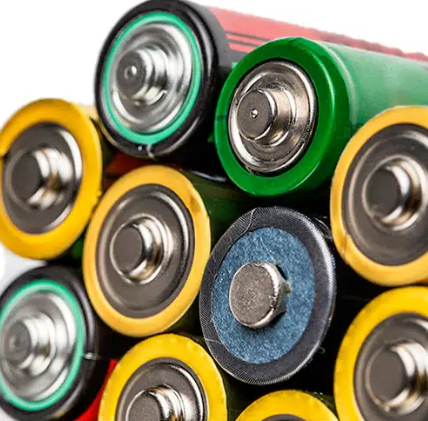- Ameya360 Component Supply Platform >
- Trade news >
- What is Supercapacitor? What Are the Advantages of Supercapacitors?
What is Supercapacitor? What Are the Advantages of Supercapacitors?
Supercapacitors, also known as ultracapacitors or simply “caps,” have become a highly promising energy storage technology in recent years. They possess a distinctive range of advantages that have garnered significant attention and spurred research across various fields.

What is Supercapacitor?
A supercapacitor, short for supercapacitance or ultracapacitor, is an electrochemical energy storage device that bridges the gap between conventional capacitors and batteries. Unlike traditional capacitors, supercapacitors can store and release large amounts of electrical energy efficiently.
These devices are specifically engineered to store energy by utilizing a phenomenon called electrostatic charge separation. This remarkable process takes place at the interface of two electrodes submerged in an electrolyte solution.
What is a Supercapacitor Used for?
Energy Storage: Supercapacitors are widely used in energy storage systems, especially for applications requiring rapid bursts of power. They find a home in regenerative braking systems for electric and hybrid vehicles, capturing and efficiently reusing energy during deceleration.
Peak Power Supply: These devices find application in a diverse array of electronic gadgets, including cameras, laptops, as well as mobile phones. They often complement batteries, working together to provide a surge of power when needed, thereby reducing the burden on the battery & facilitating rapid and efficient energy transfer.
Renewable Energy: Supercapacitors help smooth out power fluctuations in renewable energy sources, such as wind turbines and solar panels. They can store surplus energy and release it during lulls or sudden spikes in energy generation, ensuring a stable power supply.
Backup Power: In applications where uninterrupted power is critical, supercapacitors act as backup power sources. They are commonly used in data centers, critical infrastructure systems, and industrial processes to provide emergency power during grid outages.
Electronics: Supercapacitors play a crucial role in preserving memory in electronic devices, plus safeguarding data integrity during power disruptions. This is especially valuable in contexts such as industrial automation, where the reliability of information is of utmost importance.
Power Quality Improvement: Supercapacitors help improve the quality of power in electrical grids by compensating for voltage sags and fluctuations, contributing to a more stable and reliable energy supply.
How Does a Supercapacitor Work?
Supercapacitors primarily store energy through two mechanisms: electrostatic and electrochemical. The electrostatic mechanism occurs when charges are separated at the electrode-electrolyte interface, resulting in the formation of a double layer of ions. This fascinating process, known as double-layer capacitance, allows energy storage without any chemical reactions taking place.
On the other hand, the electrochemical mechanism involves redox reactions, where charge storage is achieved through the movement of ions between the electrolyte and the electrode material. Pseudocapacitance is a term used to describe this phenomenon. Supercapacitors can utilize one or both of these mechanisms, depending on their design and intended application.
What Are the Advantages of Supercapacitors?
High Power Density: Supercapacitors exhibit an extraordinary capacity to deliver an immediate surge of energy, making them ideal for applications requiring rapid power augmentation. This encompasses the swift acceleration of electric vehicles as well as the instantaneous illumination of camera flashes.
Rapid Charging and Discharging: Supercapacitors can be charged as well as discharged quickly, reducing downtime and improving overall efficiency in various applications. This quick response is crucial in critical situations and energy storage systems.
Maintenance-Free: Supercapacitors, as solid-state devices, offer the significant advantage of requiring no regular maintenance. Unlike batteries, they are not prone to problems like leakage or chemical degradation, resulting in reduced operational costs. Moreover, their durable construction guarantees enduring performance and reliability.
Wide Temperature Range: These devices are engineered to operate flawlessly in the harshest temperature conditions, withstanding extreme lows of -40°C and scorching highs of 70°C and beyond. This unparalleled durability makes them incredibly versatile for a wide range of environments and applications.
High Efficiency: Supercapacitors have high charge/discharge efficiency, typically exceeding 95%, resulting in minimal energy loss during energy transfer.
Reduced Environmental Impact: Supercapacitors are widely regarded as a greener alternative to conventional batteries. Unlike their counterparts, they do not contain any hazardous substances such as heavy metals, making them not only safer but also more environmentally friendly. Their recyclability is greatly simplified, further contributing to their positive impact on sustainability.
What Are the Downsides of Supercapacitors?
Low Energy Density: Supercapacitors store significantly less energy per unit volume or weight compared to conventional batteries. This limits their suitability for applications requiring long-term energy storage.
Voltage Limit: Supercapacitors typically operate at low voltages, requiring complex arrangements in some applications to reach higher voltage levels. This can make them less straightforward to integrate into certain systems.
High Self-Discharge Rate: Supercapacitors tend to lose their stored energy more rapidly than batteries. Their high self-discharge rate means they may not be the best choice for applications requiring long-term energy retention without frequent recharging.
Cost: Supercapacitors are generally more expensive than traditional batteries. While their long cycle life can offset this cost in some cases, the initial investment can be a barrier in certain applications.
Online messageinquiry
- Week of hot material
- Material in short supply seckilling
| model | brand | Quote |
|---|---|---|
| TL431ACLPR | Texas Instruments | |
| CDZVT2R20B | ROHM Semiconductor | |
| MC33074DR2G | onsemi | |
| BD71847AMWV-E2 | ROHM Semiconductor | |
| RB751G-40T2R | ROHM Semiconductor |
| model | brand | To snap up |
|---|---|---|
| IPZ40N04S5L4R8ATMA1 | Infineon Technologies | |
| STM32F429IGT6 | STMicroelectronics | |
| ESR03EZPJ151 | ROHM Semiconductor | |
| BP3621 | ROHM Semiconductor | |
| TPS63050YFFR | Texas Instruments | |
| BU33JA2MNVX-CTL | ROHM Semiconductor |
- Week of ranking
- Month ranking
Qr code of ameya360 official account
Identify TWO-DIMENSIONAL code, you can pay attention to


Please enter the verification code in the image below:























